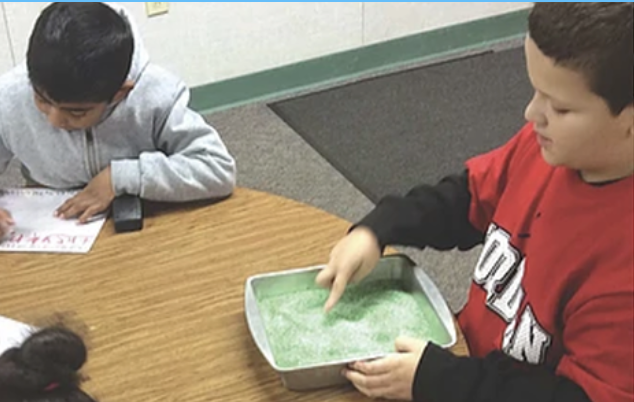
As I speak with teachers of our youngest students regarding technology integration, I often hear concerns that technological devices will prevent these learners from necessary developmental fine motor activities that cement learning. “Too much screen time takes away from learning!” they argue.
Real > Virtual
As a former teacher of kindergarten, first grade, and second grade classrooms, I could not agree more.
All students, but particularly our youngest, must experience learning in a hands-on, kinesthetic way. Sand box letter formation trays, counting bears, and word family sorts are effective and need not be replaced by VR headsets. Computers create abstractions to represent real life phenomena, and reality is greater than that which is virtual.

Young students need to draw pictures to visualize their thinking, they need to manipulate 3 dimensional blocks to build conceptual knowledge of geometry, they need to physically sort objects into categories to reveal critical thinking. What then, is the role of technology in a classroom full of students, especially for our youngest learners? Technology can serve to document this learning, to validate process over product, to provide opportunities to verbalize thinking. We can leverage technology in a way that does not replace, but magnifies real learning experiences.
Reality Made Permanent
Hands-on, kinesthetic learning experiences promote connections in the brain and make for a memorable experience that benefits our students. And yet, the experience lasts only as long as the lab or activity. But what if we could document this real experience, what if we could use technology to go back in time, to spark these memories and build upon the learning of the past? The power of technology in a primary classroom is in its recording capabilities.
While students are learning, take pictures of their illustrations and corresponding writing (note I used the word writing, not typing), record an audio of their verbal explanations of math manipulative use, take a video of their lab work. This approach allows us to maintain active learning, but also integrate technology.
Logistics: Pics in Real Time
Use Google Suite for Education? Using your phone or tablet, take a picture of students working (iPhones work too!). Download the Google Slides app and open it on your phone.
Open up a slidedeck of your choice and insert the images directly from your phone, as shown on the picture tutorial. Open the slidedeck on your computer, to be projected for the entire class. Engage students in conversations regarding the learning. This can be done in real time, directly after the activity, or later in the year for review. Images evoke memories, which helps to cement learning in the brain. Be sure to take pictures as the learning occurs, not merely to showcase the product. This validates a #failforward mindset and celebrates learning as a process.

Student Powered Portfolios
Students themselves, as young as age 4, can similarly document their learning via digital means. I have seen 3 year olds use their parents’ phones to take photos, add filters, and send their photographic creations to family via Snapchat. I understand that you (or your administration) may not be comfortable using Snapchat in the classroom with young students, but we can leverage our students’ familiarity with technology using other programs such as Seesaw. In the example pictured, students were studying words with the __ck ending.

In a paper journal, each student drew a picture of a word corresponding to the word ending of the week, and then handwrote a word or sentence to match. The students then opened up the app Seesaw, took a picture of their journal, used the “draw” tool to circle the word ending being studied, and recorded an audio during which they verbally read their writing. Imagine the power of not only documenting non-tech learning in a digital format, but accelerating the learning by using an audio recording feature. To make it even more impactful, Seesaw promotes home-school connection by creating a unique login experience for each student’s parents or guardians, by which they are able to view only their child’s work.
Expand the Walls of the Classroom
Technology can be used to not only document learning, but to leverage the power of an authentic audience.
The kindergarten and first grade students pictured were featured on Twitter, with a hashtag that all parents and community members were able to see. As seen in the images, the technology is not being used to thwart active, hands-on learning. Rather, the technology simplify magnifies and documents solid learning experiences. When we publish student work to an authentic audience, we validate the learning process and celebrate student success.

Technology is about more than screen time. Let us not trivialize technology into being little more than a resource for programs that leave students glued to a screen for educational games. Leverage technology for all it has to offer, as an addition rather than replacement for active learning experiences.
